Visitors arriving in Hanoi often wish to start their journey by paying a visit to the Ho Chi Minh Mausoleum – the final resting place of Ho Chi Minh, a great leader of the Vietnamese people and a distinguished cultural figure globally. If you plan to visit the mausoleum, here is everything you need to know beforehand.
1/ Where is Ho Chi Minh Mausoleum?
Ho Chi Minh Mausoleum holds significant historical importance, symbolizing the deep affection of the Vietnamese people towards their great leader. It is a cultural and historical landmark in the capital, attracting both domestic and international tourists on their visits to Hanoi.
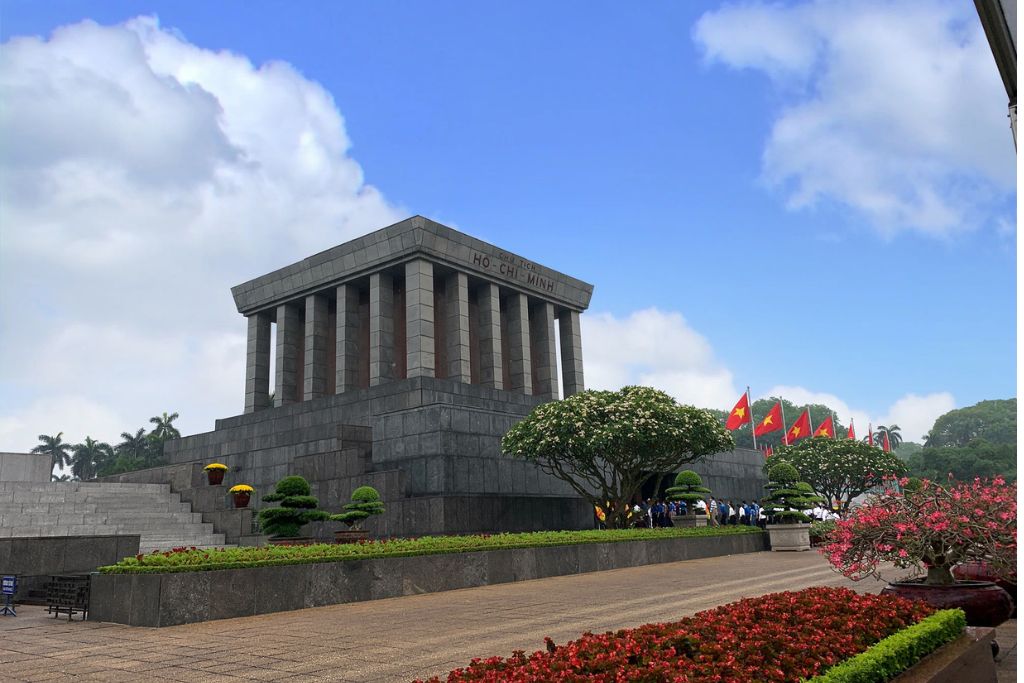
- Address: 2 Hung Vuong Street, Dien Bien Ward, Ba Dinh District, Hanoi
The mausoleum is situated at the old podium in the center of Ba Dinh Square, where President Ho Chi Minh led important rallies in the past. To reach the mausoleum, you can use personal transportation, hire a motorbike in Hanoi, or utilize public transportation, which is convenient and readily available. If using the bus, you can consider routes such as 09, 33, 22, 45, and 50.
2/ Visiting Hours and Tickets for Ho Chi Minh Mausoleum
Details of the opening hours at Ho Chi Minh Mausoleum are as follows:
- Summer Schedule (from April to October):
- Every Tuesday, Wednesday, and Thursday: Open from 7:30 AM to 10:30 AM (morning only).
- Saturday and Sunday: Open from 7:30 AM to 11:00 AM (morning only, closing 30 minutes later than usual).
- Winter Schedule (from November to March):
- Every Tuesday, Wednesday, and Thursday: Open from 8:00 AM to 11:00 AM (morning only).
- Saturday and Sunday: Open from 8:00 AM to 11:30 AM (morning only, closing 30 minutes later than usual).
- Closed on Mondays and Fridays for facility maintenance, except on holidays such as May 19th, September 2nd, and the 1st day of the Lunar New Year when the Mausoleum remains open for visitors.
You can purchase tickets right at the mausoleum gate. This is also the location where you will have to queue to join the visitor line.
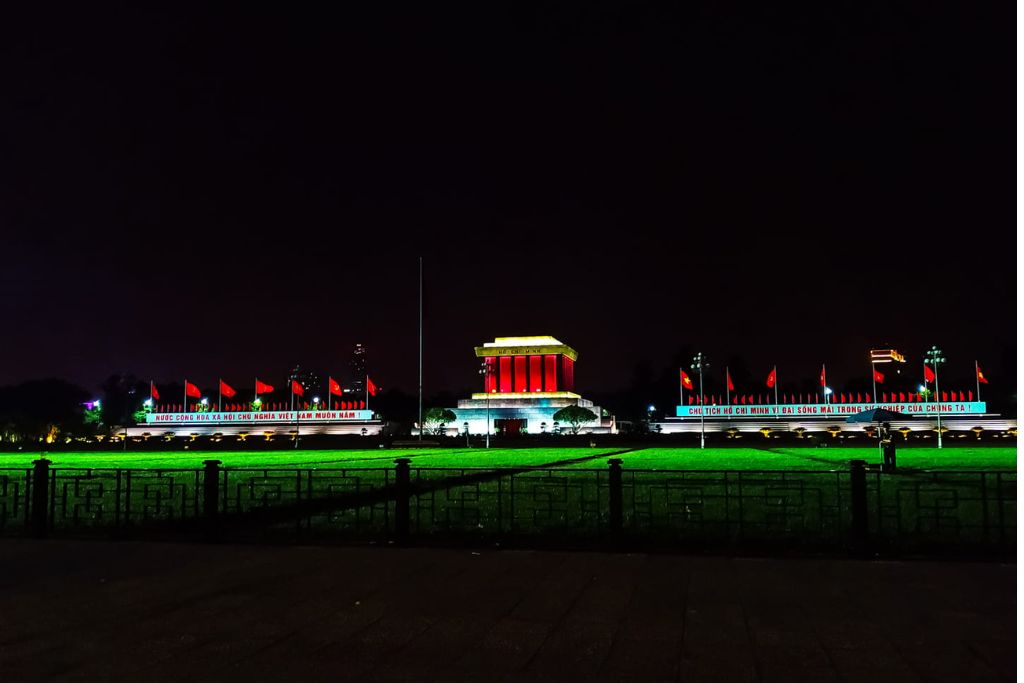
- Vietnamese citizens can visit for free.
- For foreign tourists, the ticket price is $1.03 per person.
- Tickets for visiting the stilt house area are priced at $1.03 per person.
3/ Most Attractive Activities When Visiting Ho Chi Minh Mausoleum
When exploring Ho Chi Minh Mausoleum in Hanoi, visitors immerse themselves in a solemn atmosphere, retracing the heroic past of the great leader of the Vietnamese people. Here are some captivating activities to enhance your meaningful visit:
3.1. Witness the Flag-Raising and Flag-Lowering Ceremonies at Ba Dinh Square
Do you know where the flag-raising and flag-lowering ceremonies take place at Ho Chi Minh Mausoleum? Every day at 6 a.m. and 9 p.m. at Ba Dinh Square, the flag-raising and flag-lowering ceremonies are conducted at Ho Chi Minh Mausoleum. This is a highly solemn moment that any visitor would want to witness when visiting this site. A guard of 37 soldiers performs a series of rituals accompanied by the majestic national anthem, and the national flag is raised, signaling the opening of the mausoleum to visitors.
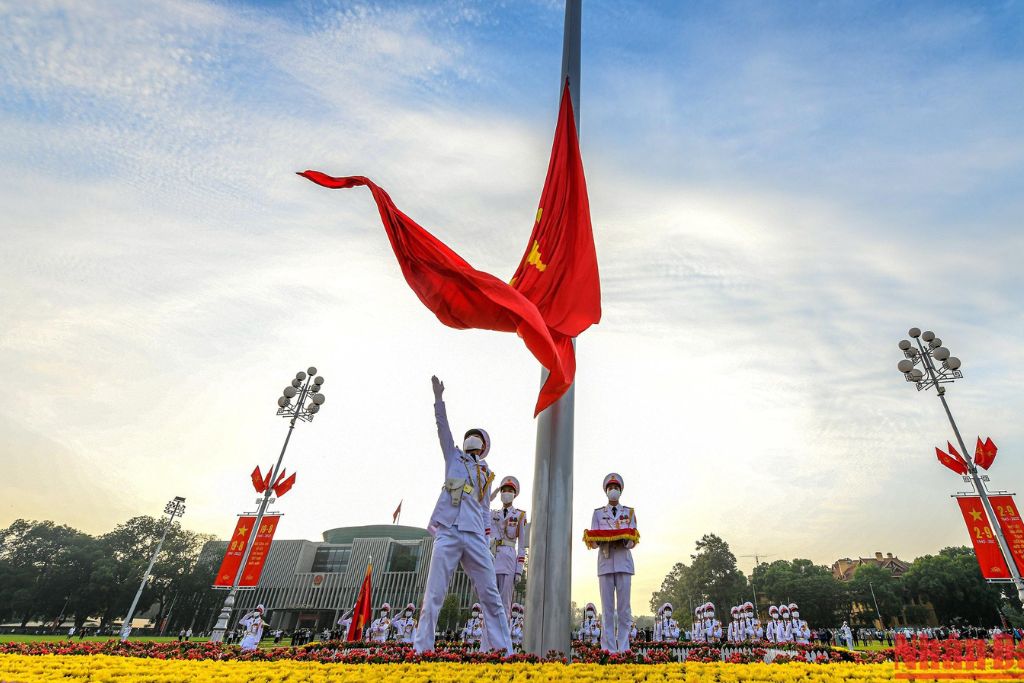
Flag-Raising and Flag-Lowering ceremonies are solemnly held in front of Ho Chi Minh Mausoleum in the early morning and evening every day (Photo: collected)
3.2. Explore the Architecture of Ho Chi Minh Mausoleum
The overall architecture of Ho Chi Minh Mausoleum is a solid square block with three layers, 21.6 meters high and 41.2 meters wide, designed to withstand floods, bombings, and earthquakes with an intensity of 7 on the Richter scale. The outer layer of the mausoleum is clad in gray granite, surrounded by rows of columns made of pink granite with the inscription “PRESIDENT HO – CHI – MINH” in prominent red jade letters on top of the mausoleum. The forecourt of the mausoleum is clad in pink granite with a profound message: “Nothing is more precious than Independence and Freedom,” along with the golden signature of President Ho Chi Minh. This represents the dedication and aspirations of an independent nation.
3.3. Visit the Interior of Ho Chi Minh Mausoleum
Many visitors wonder where the building materials inside Ho Chi Minh Mausoleum come from. The answer is that the 200 sets of doors inside the mausoleum are crafted from precious wood collected from all over the country.
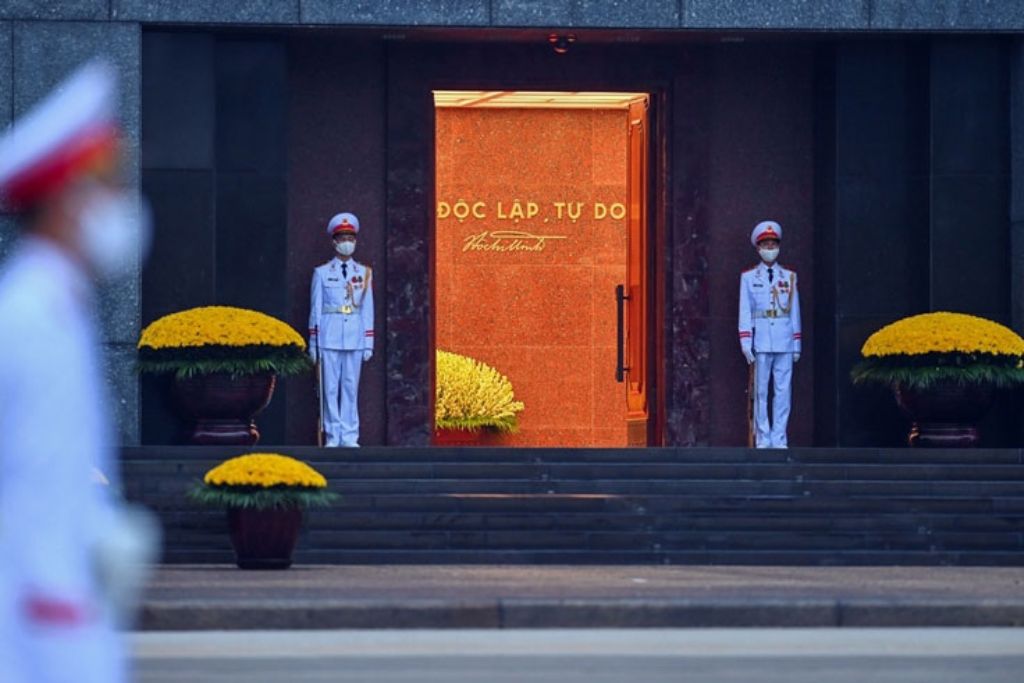
The focal point of the mausoleum is the room where the remains of President Ho Chi Minh are placed, a sacred and solemn space. The room is entirely clad in marble, creating a unique and elegant appearance. The remains of President Ho Chi Minh in Ho Chi Minh Mausoleum are located in the center of the mausoleum, preserved in a glass case placed on a bed, beneath a stone slab. On special occasions, when there are visitors to the mausoleum, four guards will stand inside the room with the remains, adding a solemn atmosphere to this important event.
3.4. Visit the Presidential Palace Where is the Presidential Palace within Ho Chi Minh Mausoleum?
This structure is part of the mausoleum complex, originally built in classical French architecture as the residence for the Governor-General of Indochina. When the French colonialists left Vietnam, President Ho Chi Minh worked here from 1954 until his departure in 1969. Today, the Presidential Palace serves as a reception venue for officials and hosts important state events. The palace grounds are filled with greenery, preserving many large ancient trees, creating a refreshing and tranquil space.
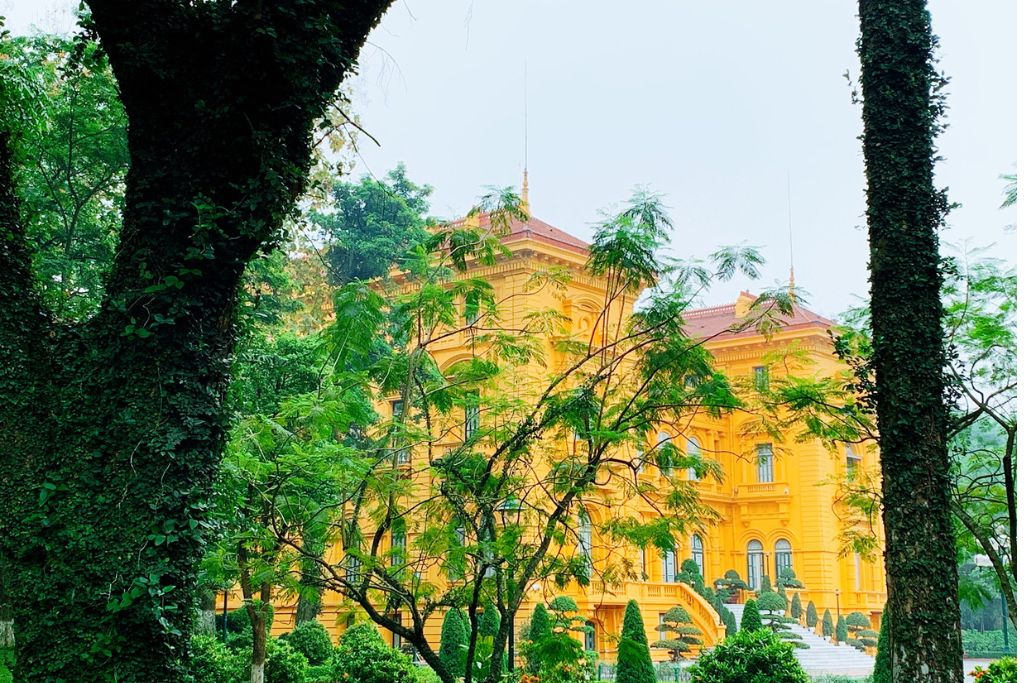
3.5. Stroll Around the Stilt House and Ho Chi Minh’s Fish Pond
With inherent simplicity, President Ho Chi Minh chose to live in a modest stilt house instead of the luxurious Presidential Palace. Where is Ho Chi Minh’s stilt house within Ho Chi Minh Mausoleum? Not far from the Presidential Palace, this area still preserves artifacts from his lifetime. Built with wood following the architecture of the stilt houses of the Tay – Thai ethnic groups in the northern regions of Vietnam, the stilt house is simple but holds the soul and lifestyle of a great leader.
The stilt house was constructed based on President Ho Chi Minh’s wishes, following discussions with architect Nguyen Van Ninh. The house has two floors, with a spacious first floor and the second floor divided into two rooms with the partition utilized as a bookshelf. Surrounding the house is a corridor, creating a comfortable and convenient living space. Ho Chi Minh’s stilt house is not only a long-term residence of the leader but also bears significant imprints in the history of the country.
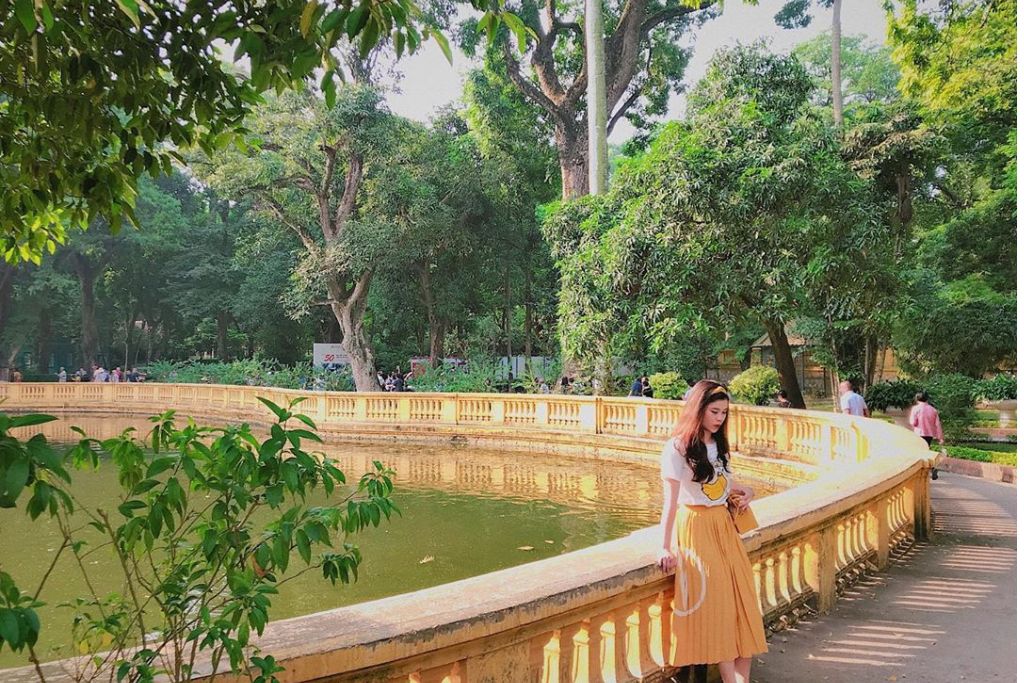
Ho Chi Minh’s stilt house is the place where he lived and worked during the remaining years of his life (Photo: collected) President Ho Chi Minh’s Fish Pond is located right in front of the stilt house. Before breakfast, President Ho Chi Minh would leave a bit of dried bread or rice for the fish as their food. In cold weather, he always cared and reminded the staff to place duckweed in the northern corner of the pond to ensure the fish had a hiding place. On special occasions like Tet holidays, he would often give fish as gifts to leaders and security units.
3.6. Explore Ho Chi Minh Museum
Ho Chi Minh Museum is one of the must-visit attractions in Hanoi. The building boasts an impressive architectural design with a beveled square block, nearly 20 meters high, set diagonally to create the elegant appearance of a white lotus. With a usage area of up to 18,000 square meters, the Ho Chi Minh Museum has become the largest and most modern museum in the country.

The exhibition floors in the museum are intricately connected. The grand hall features a vaulted ceiling over 9 meters high, adorned with the four-season flowers and leaves of the country, housing the full-body bronze statue of President Ho Chi Minh. The exhibition space covers nearly 4000 square meters, displaying over 2000 documents, artifacts, and images, portraying the life and career of President Ho Chi Minh intertwined with important historical events in Vietnam and the world.
3.7. Learn About One Pillar Pagoda
Located within the Ho Chi Minh Mausoleum complex, One Pillar Pagoda has its origins from the Ly dynasty and is a unique symbol of the capital city of Hanoi.

The distinctive architecture of One Pillar Pagoda lies in the imitation of the shape of a lotus, a symbol of purity and resilience. One Pillar Pagoda has become a meaningful destination for tourists wanting to explore the cultural and spiritual beauty of Hanoi.
